Pages:
#1 Off-Topic Chat » Common Problems With the Alfa Romeo Giulia: A Comprehensive Analysis » Jan 25 2:18 AM
- jodifowler
- Replies: 0
The Alfa Romeo Giulia, known for its stunning design and exhilarating driving experience, has gained popularity in the world of luxury sedans. However, like any vehicle, it is not without its share of common problems.

In this article, we will delve into the most frequently reported issues with the Alfa Romeo Giulia, exploring both mechanical and electrical concerns. By understanding these problems, potential owners can make informed decisions and take necessary precautions.
Electrical Problems

One of the most notorious issues plaguing the Alfa Romeo Giulia is related to its electrical system. Many owners have reported a series of common faults that lead to various problems. For instance, some Giulia owners have experienced sudden shutdowns of their vehicles, with no warning signs or ability to restart. Additionally, multiple warning lights have been known to illuminate simultaneously, even when no mechanical failures are present. Battery draining, malfunctions in the stop-start system, and problems with corroded or leaking batteries have also been reported.
Engine Misfires
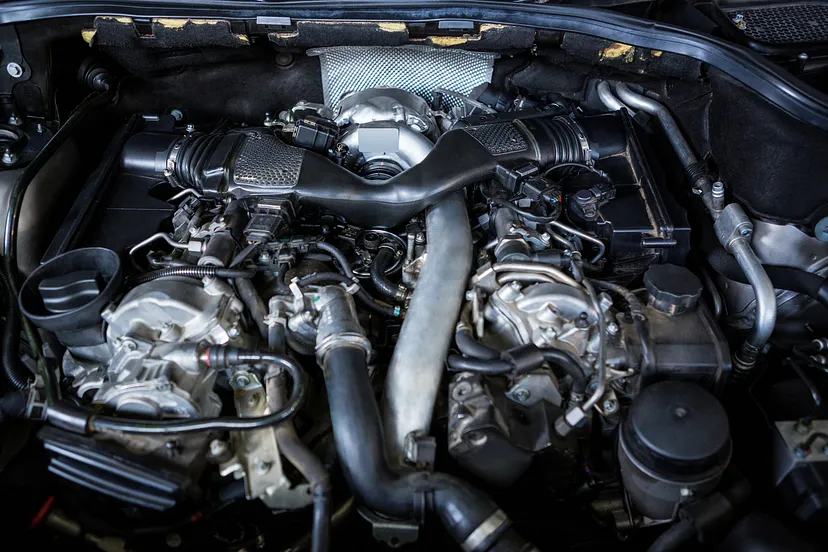
Another common problem encountered by Alfa Romeo Giulia owners is engine misfires. Specifically, models from 2017 and 2018 were subject to a recall due to this issue. The misfires in the 2.0-liter turbocharged models could lead to severe consequences if left unchecked. Catalytic converters may overheat, causing damage to the engine wiring and resulting in additional electrical faults. In extreme cases, engine fires and failing exhaust systems could occur.
Anti-Lock Brake Failure

Brake issues are a cause for concern in any car, and unfortunately, the Alfa Romeo Giulia is not exempt. One of the common problems with this vehicle involves failures of the anti-lock braking system (ABS). In certain 2020 and 2021 Giulia models, hard braking could cause the hydraulic control unit of the ABS system to separate. This leads to reduced braking power and a complete loss of anti-lock braking functionality, posing serious safety risks. To address this issue, a recall was issued, allowing affected Alfa Romeo Giulia owners to have their hydraulic control unit replaced at no cost.
Failing Rear Brake Discs

In addition to the ABS failure, another brake-related concern affects 2020 Alfa Romeo Giulia models. The rear brake discs in these vehicles have been prone to breaking apart, resulting in a sudden and complete loss of braking power. This issue prompted a recall, ensuring that affected models receive free brake rotor and pad replacements, mitigating the risk of accidents.
Fuel Leaks and Fire Risk

Fuel leaks are always a serious concern, as they can lead to vehicle fires. In the case of the Alfa Romeo Giulia, certain 2020 and 2021 models experienced this problem due to a crack in the fuel line sensor housing. The crack allowed fuel to leak from the fuel lines, significantly increasing the risk of fire. As a result, Alfa Romeo offered free repairs to all affected Giulia owners, addressing the issue and ensuring their safety.
Other Common Alfa Romeo Giulia Problems

While the aforementioned issues are the most commonly reported, there are several other concerns that Alfa Romeo Giulia owners have encountered. For example, 2017 and 2018 Giulia models have frequently experienced contaminated and leaking brake fluid. Another prevalent issue among Giulia models from 2017 to 2019 is the inability to disable the adaptive cruise control system due to faulty brake module software. Furthermore, owners of Giulia models between 2018 and 2019 have reported problems with the fuel gauge, resulting in inaccurate readings and leaving some stranded due to unexpected fuel depletion.
Reliability of the Alfa Romeo Giulia

Given the array of reported problems, one may question the overall reliability of the Alfa Romeo Giulia. While these issues have undoubtedly impacted the perception of the vehicle’s dependability, it is essential to consider the efforts made by Alfa Romeo to address and rectify these problems. J.D. Power, a reputable source for automotive ratings, awarded the Giulia a reliability score of 74 out of 100, placing it in the average range. It is crucial to note that proper maintenance and adherence to recall requirements are vital in ensuring the longevity and reliability of any vehicle, including the Alfa Romeo Giulia.
Conclusion
Thanks for giving your valuable time to read this blog, In case you have a ssangyong car and you are looking for a ssangyong garage bolton for your car service than visit the Service My Car website for all the ssangyong related solutions.
The Alfa Romeo Giulia, with its captivating design and exhilarating performance, has undoubtedly made its mark in the luxury sedan segment. However, it is not immune to common problems that owners have reported. From electrical issues to brake failures and fuel leaks, these concerns have impacted the perception of the Giulia’s reliability. Nevertheless, Alfa Romeo has taken steps to address these problems through recalls and free repairs, demonstrating their commitment to customer satisfaction and safety. By staying informed about these common issues and taking proactive measures, potential owners can enjoy the unique driving experience that the Alfa Romeo Giulia offers while minimizing the impact of these challenges.
#2 Off-Topic Chat » A Guide to Overcoming Common Vauxhall Car Problems » Jan 10 2:35 AM
- jodifowler
- Replies: 0
Vauxhall has long been a trusted name in the automotive industry, producing reliable and stylish vehicles for decades. However, like any other car brand, Vauxhall cars are not immune to common issues that can arise over time.

In this comprehensive guide, we will explore some of the typical problems faced by Vauxhall owners and provide practical solutions to overcome them.
Electrical Gremlins:

One of the common issues reported by Vauxhall car owners is related to electrical components. From malfunctioning lights to issues with the central locking system, electrical gremlins can be frustrating. To tackle this problem, start by checking the fuses and relays. If you’re not comfortable doing this yourself, seek professional help. Regularly inspect and replace faulty bulbs, and consider investing in a quality diagnostic tool to identify and address electrical issues promptly.
Faulty Ignition Coils:

Many Vauxhall models are prone to ignition coil failures, leading to rough idling, misfires, and a decrease in overall performance. If you experience these symptoms, it’s advisable to replace the faulty ignition coil promptly. Regular maintenance, such as changing spark plugs and ensuring a clean air filter, can also contribute to preventing ignition coil problems.
Timing Belt Troubles:
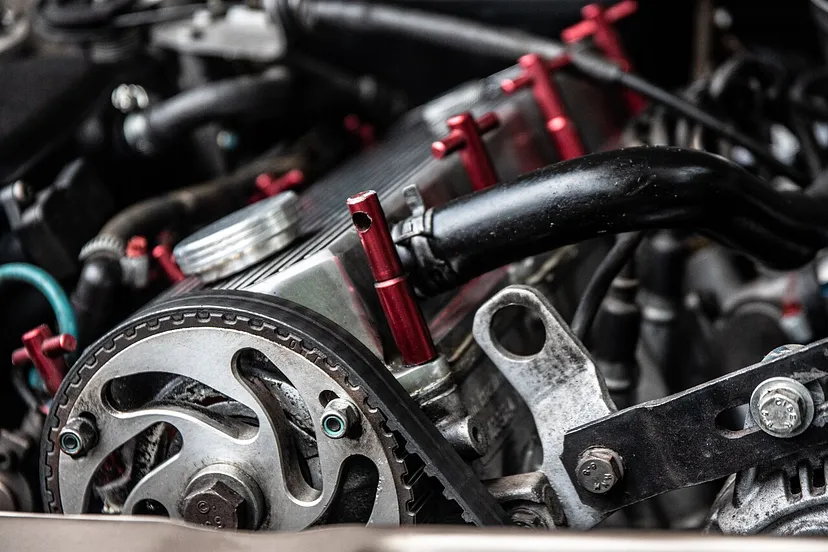
The timing belt is a critical component in the engine that synchronizes the rotation of the crankshaft and camshaft. Over time, the timing belt can wear out, leading to serious engine damage if it breaks. Vauxhall owners should adhere to the recommended replacement intervals provided in the vehicle’s manual. Regular inspections and timely replacements can prevent costly engine repairs and keep your car running smoothly.
Clutch and Gearbox Issues:

Some Vauxhall models may experience clutch and gearbox problems, including difficulty in shifting gears or a slipping clutch. Regularly check the clutch fluid levels and ensure that the gearbox oil is at the recommended level. If you notice any unusual noises or difficulties in gear engagement, consult with a professional mechanic for a thorough inspection and potential repairs.
Cooling System Challenges:

Overheating issues are not uncommon in Vauxhall cars, often caused by a malfunctioning thermostat, a faulty radiator, or a leaking coolant system. Regularly check the coolant levels and inspect for any signs of leaks. If your car is prone to overheating, consider flushing and replacing the coolant at the recommended intervals. Additionally, ensure that the radiator and cooling fans are working correctly.
Suspension Woes:

Vauxhall owners may encounter problems with the suspension system, resulting in a bumpy ride and poor handling. Regularly inspect the shock absorbers, struts, and other suspension components for signs of wear or damage. If you notice any unusual noises or a decrease in ride comfort, consult with a professional mechanic to address the issue promptly.
Brake System Challenges:
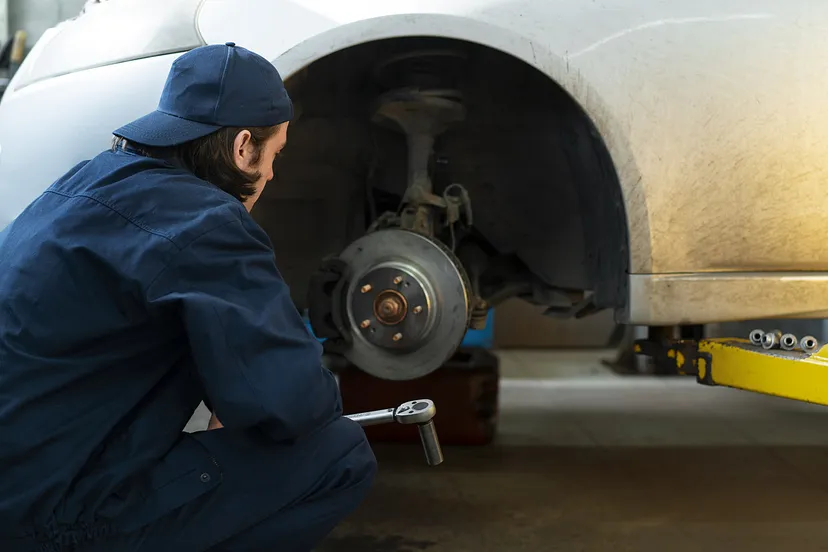
Brake-related problems can compromise the safety of your Vauxhall car. Issues such as squeaking or grinding noises, reduced braking efficiency, or a spongy brake pedal should not be ignored. Regularly check the brake pads, discs, and brake fluid levels. Replace worn-out brake components and seek professional assistance for brake system inspections to ensure optimal performance.
How Service My Car Assists You ?
Have you reached a point where you’re questioning, “Where can I find the top mercedes benz service bolton centre for my car service ?” Look no further, Service My Car is your ultimate solution for mercedes benz service, with a special focus on mercedes benz owners in Bolton. Our platform connects you with reputable mercedes benz garages in Bolton, ensuring skilled professionals handle your car. From routine servicing to addressing specific car issues, we streamline the process, saving you time and effort. Enjoy the convenience of online booking, transparent pricing, and a network of certified mechanics dedicated to maintaining your mercedes benz peak performance. With Service My Car, your car receives expert care, giving you peace of mind and a reliable driving experience in Bolton and beyond.
Conclusion
Owning a Vauxhall car can be a rewarding experience, but like any vehicle, it requires regular maintenance and attention to common issues. By staying proactive and addressing problems promptly, you can extend the lifespan of your car and enjoy a smoother driving experience. Remember to follow the manufacturer’s maintenance guidelines, and when in doubt, consult with a qualified mechanic to keep your Vauxhall in top-notch condition.
#3 Off-Topic Chat » How to Recharge Your Car's Air Conditioning System » Dec 27 3:07 AM
- jodifowler
- Replies: 1
As the summer heat intensifies, your car’s air conditioning system becomes a crucial component for a comfortable driving experience. However, over time, the system may lose its cooling capacity, causing discomfort during hot weather. In such cases, recharging the car’s air conditioning system can effectively restore its cooling performance.

This comprehensive guide will take you through the step-by-step process of recharging your car’s air conditioning system, ensuring that you can tackle this DIY task with ease.
Understanding the Basics

How Does Car Air Conditioning Work ?
Before diving into the recharge process, it’s essential to understand how your car’s air conditioning system works. The system operates by compressing and expanding refrigerant, which absorbs heat from the cabin and releases it outside. The key components include the compressor, condenser, evaporator, and expansion valve. Familiarizing yourself with these components will help you navigate the recharge process more effectively.
Signs That Your Car’s Air Conditioning System Needs Recharging
Recognizing the signs of a low refrigerant level is crucial for determining when it’s time to recharge your car’s air conditioning system. Some common indicators include warm air blowing from the vents, reduced cooling performance, unusual noises, and visible refrigerant leaks. Regularly inspecting and maintaining your air conditioning system can help prevent these issues.
Gathering the Necessary Tools and Materials

PSI Pressure Gauge
To accurately monitor the pressure levels during the recharge process, you’ll need a PSI pressure gauge. This tool allows you to determine the correct pressure range for your specific vehicle.
Car A/C Charge Kit
Investing in a car A/C charge kit is essential for a successful recharge. Ensure that the kit contains the proper refrigerant for your vehicle, as specified by the manufacturer. Additionally, consider opting for a kit with UV dye, which aids in detecting any potential leaks.
UV Kit
While not essential, a UV kit can be a valuable addition to your recharge process. The UV dye included in the kit helps identify minor leaks in the system, allowing for prompt repairs if necessary.
Preparing for the Recharge

Locating the Low-Side Port
To begin the recharge process, you need to locate the low-side port of your car’s air conditioning system. This port is typically found on the larger tube connecting the compressor and the evaporator. Consult your vehicle’s service manual or a trusted mechanic to ensure you locate the correct port.
Preparing the Recharge Kit
Before attaching the recharge kit, carefully read the instructions provided with the kit. Familiarize yourself with the specific steps and safety precautions outlined by the manufacturer. This will ensure a smooth and safe recharge process.
Recharging Your Car’s Air Conditioning System

Attaching the Recharge Kit
Now that you’re ready to recharge, attach the dispenser hose and gauge from the recharge kit to the can of refrigerant. Ensure a secure connection, as any leaks can compromise the effectiveness of the recharge process.
Connecting to the Low-Side Port
With the recharge kit prepared, connect the dispenser hose to the low-side port of your car’s air conditioning system. Make sure to follow the manufacturer’s instructions regarding the specific method of attachment for your kit.
Starting the Engine and Activating the A/C System
To begin the recharge process, start your car’s engine and activate the air conditioning system to its maximum setting. This will ensure proper circulation of refrigerant throughout the system.
Monitoring the Gauge Reading
As you dispense the refrigerant into the system, monitor the gauge reading provided by the recharge kit. The gauge will indicate the pressure levels in the system, helping you avoid over-pressurization and ensuring an optimal recharge.
Dispensing the Refrigerant
Follow the instructions provided with the recharge kit to dispense the refrigerant into the system. Shake the canister periodically to ensure even distribution and maintain a steady flow of refrigerant.
Checking the Pressure Levels
Continuously monitor the pressure levels indicated on the gauge throughout the recharge process. Consult the pressure chart included in the recharge kit instructions to determine the appropriate pressure range for your specific vehicle.
Completing the Recharge
Once the pressure levels reach the desired range, you can conclude the recharge process. Disconnect the dispenser hose from the low-side port, ensuring a secure seal to prevent any refrigerant leaks.
Checking for Leaks
If your recharge kit includes UV dye, you can perform a leak check after completing the recharge process. Use the UV pen to examine valves and junction points in the system. If any leaks are detected, consult a professional mechanic for repairs.
Verifying the Recharge

Testing the Cooling Performance
After recharging your car’s air conditioning system, it’s crucial to verify the effectiveness of the recharge. Turn on the air conditioning and assess the cooling performance. The difference should be noticeable immediately, with cold air flowing consistently from the vents.
Monitoring for Potential Leaks
To ensure the longevity of your recharge, periodically monitor the air conditioning system for any signs of refrigerant leaks. If you detect any issues, promptly address them to prevent further damage to the system.
Maintenance Tips for Optimal Performance
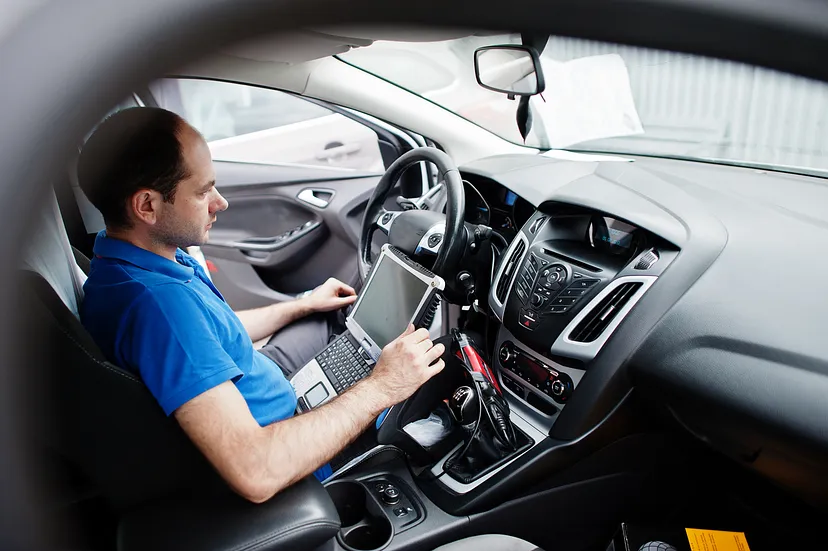
Regular System Inspections
Performing regular inspections of your car’s air conditioning system can help identify any potential issues before they escalate. Check for visible leaks, unusual noises, or reduced cooling performance. Addressing these problems early can save you from costlier repairs in the future.
Professional Maintenance
While recharging your car’s air conditioning system is a manageable DIY task, it’s advisable to seek professional maintenance periodically. Trained technicians can conduct comprehensive inspections, perform necessary repairs, and ensure optimal performance.
Conclusion
Thanks for giving your valuable time to read this blog, In case you have a maserati car and you are looking for a maserati specialist bolton for your car service than visit the Service My Car website for all the maserati related solutions.
Recharging your car’s air conditioning system is an essential maintenance task that ensures your comfort during hot weather. By following this comprehensive guide, you can confidently undertake the recharge process, bringing back the cool air and enjoying a comfortable driving experience. Remember to prioritize safety, follow the manufacturer’s instructions, and seek professional assistance when needed. Stay cool and enjoy the journey!
#4 Off-Topic Chat » Brake Pads Replacement Cost Guide: Everything You Need to Know » Dec 13 4:54 AM
- jodifowler
- Replies: 0
Maintaining your vehicle’s braking system is crucial for both safety and performance. Over time, brake pads wear down and require replacement to ensure optimal stopping power. Understanding the costs associated with brake pad replacement is essential for responsible car ownership.

In this comprehensive guide, we’ll delve into the factors influencing brake pads replacement costs, explore different types of brake pads, and provide tips on how to minimize expenses without compromising safety.
Factors Influencing Brake Pads Replacement Costs

Type of Brake Pads:

One of the primary benefits of roadside assistance is towing. If your vehicle cannot be fixed on the spot, the service provider will tow your car to the nearest repair shop or a location of your choice. This can save you the hassle and cost of arranging a tow truck.
Vehicle Make and Model:

The make and model of your vehicle play a crucial role in determining brake pad replacement costs. Luxury or performance vehicles often require specialized brake pads, which can be more expensive than those used in standard cars. Additionally, certain vehicles may have more complex brake systems, influencing labor costs during replacement.
Labor Costs:

The labor costs associated with brake pad replacement can vary depending on the mechanic’s hourly rate and the complexity of the job. Some vehicles have more accessible brake systems, making replacement quicker and less expensive. However, in cases where brake components are harder to reach or require additional disassembly, labor costs may increase.
Brake System Components:

Brake pads are just one part of the braking system. If other components, such as rotors or calipers, need replacement or resurfacing, the overall cost will be higher. It’s essential to assess the entire braking system to ensure all components are functioning optimally.
Tips for Minimizing Brake Pads Replacement Costs
Regular Maintenance:

Consistent and proactive maintenance can extend the lifespan of your brake pads. Regularly inspect your braking system for any signs of wear or issues. Addressing problems early can prevent further damage and reduce overall repair costs.
DIY vs. Professional Installation:

While some car enthusiasts may opt for a do-it-yourself approach, brake pad replacement is a task best left to professionals. Incorrect installation can compromise your safety. However, if you have experience and the necessary tools, replacing brake pads yourself can save on labor costs.
Comparing Quotes:

It’s wise to obtain quotes from multiple mechanics or auto shops before committing to brake pad replacement. Prices can vary, and getting several estimates ensures that you’re not overpaying for parts or labor.
Choosing Quality Parts:

While it may be tempting to opt for the cheapest brake pads available, investing in quality parts can save you money in the long run. High-quality brake pads tend to last longer and perform better, reducing the frequency of replacements.
How Service My Car Assists You ?
Have you reached a point where you’re questioning, “Where can I find the top car garage for my car head gasket repair manchester ?" Service My Car platform offers a car head gasket repair service, that allows you to compare quotes from reputable mechanics. With expert guidance and quality assurance, we empower you to make informed decisions about your vehicle’s well-being.
Skip the hassle of multiple calls and visits — explore, compare, and schedule services effortlessly. Your safety is our priority; we connect you with certified professionals. Whether you prefer DIY or professional assistance, find the perfect balance of quality and affordability at Service My Car.
Conclusion
Brake pad replacement is a critical aspect of vehicle maintenance that directly impacts safety and performance. Understanding the factors influencing replacement costs empowers car owners to make informed decisions. By considering the type of brake pads, vehicle make and model, labor costs, and the condition of other brake system components, you can navigate the process more effectively.
While cost is undoubtedly a consideration, prioritizing safety should be the primary concern. Regular maintenance, proactive inspections, and choosing quality parts contribute to a reliable braking system that ensures you can stop safely when it matters most. By following these guidelines, you can strike a balance between cost-effectiveness and responsible car ownership.
#5 Off-Topic Chat » Roadside Assistance: A Guide to Car Recovery Services » Nov 24 5:09 AM
- jodifowler
- Replies: 0
Imagine you're driving down the highway, enjoying the scenery, when suddenly your car starts making strange noises and comes to a sputtering halt. Or perhaps you find yourself stuck in your driveway with a dead battery on a freezing winter morning. In situations like these, having reliable roadside assistance can make all the difference between a minor inconvenience and a major headache.

In this comprehensive guide, we will explore the importance of roadside assistance and provide insights into the services offered, ensuring you're well-prepared for any unexpected roadside emergencies.
Understanding Roadside Assistance:

Roadside assistance is a service provided by automobile clubs, insurance providers, and independent companies to assist drivers when their vehicle breaks down or faces other issues while on the road. These services are designed to provide quick and efficient help, ensuring you’re not left stranded in potentially unsafe situations. While the specific offerings can vary between providers, there are common services you can expect:
Towing Services:

One of the primary benefits of roadside assistance is towing. If your vehicle cannot be fixed on the spot, the service provider will tow your car to the nearest repair shop or a location of your choice. This can save you the hassle and cost of arranging a tow truck.
Battery Jump-Start:

Dead batteries are a common issue, especially in extreme weather conditions. Roadside assistance providers can jump-start your vehicle, allowing you to continue your journey or drive to a nearby service station for further inspection.
Flat Tire Assistance:

Changing a flat tire can be a daunting task, especially if you need to become more familiar with the process. Roadside assistance services include changing your flat tire with your spare, and ensuring you can safely reach a tire repair shop for a permanent solution.
Fuel Delivery:

Running out of fuel can happen to anyone. Roadside assistance services can deliver a small amount of fuel to your location, allowing you to reach the nearest gas station without walking to get fuel.
Lockout Assistance:

Accidentally locking your keys inside your car is a frustrating situation. Roadside assistance providers can help you gain access to your vehicle, saving you from potential damage caused by amateur attempts to unlock the car.
Minor Repairs:

Some roadside assistance services offer minor on-the-spot repairs, such as fixing a broken belt, hose, or electrical issue. While these repairs might not solve every problem, they can get your vehicle to a nearby repair facility for further diagnosis and fixes.
Choosing the Right Roadside Assistance Plan:
When selecting a roadside assistance plan, there are several factors to consider:
Coverage Area:
Ensure that the provider offers services in the areas where you frequently travel. Some providers have limited coverage in certain regions, so it’s essential to choose one that aligns with your typical routes.
Service Limits:

Check the service limits in terms of distance and frequency. Some plans have limitations on the number of service calls allowed per year or the maximum distance for towing services. Assess your needs and choose a plan that offers adequate coverage.
Additional Benefits:

Some roadside assistance plans come with extra perks, such as trip interruption coverage, discounts on accommodations, rental car discounts, or concierge services. Evaluate these additional benefits to determine which plan provides the best value for your needs.
Provider Reputation:
Research the reputation of the roadside assistance provider. Read customer reviews and testimonials to ensure that the company has a track record of providing prompt and reliable services.
Cost:

Compare the costs of different plans and providers. While it’s essential to find an affordable option, also consider the range of services offered and the overall value provided by the plan.
Conclusion:
Thanks for giving your valuable time to read this blog, In case you have a car and you are looking for a car aircon repair workshop then visit the Service My Car website for all the car aircon repair related solutions.
Roadside assistance is not just a convenience; it’s a safety net that can rescue you from stressful and potentially dangerous situations. No one wants to be stranded on the side of the road, especially in unfamiliar or unsafe areas. By investing in a reliable roadside assistance plan, you gain peace of mind knowing that help is just a phone call away. Whether you face a flat tire, dead battery, or any other unexpected car trouble, roadside assistance services are there to get you back on the road swiftly and safely. So, before your next journey, consider enrolling in a roadside assistance plan that suits your needs and enjoys the confidence of knowing that help is always within reach.
#6 Off-Topic Chat » What is a Car Service? A Comprehensive Guide » Nov 02 4:22 AM
- jodifowler
- Replies: 0
Introduction Car servicing is an essential aspect of vehicle maintenance that ensures your car is running smoothly, efficiently, and safely. Regular servicing not only extends the lifespan of your vehicle but also helps in identifying potential issues before they become major problems. In this comprehensive guide, we will explore everything you need to know about car servicing, including its importance, different types of services, what is included in a service, and how often you should get your car serviced.

Why is Car Servicing Important ?
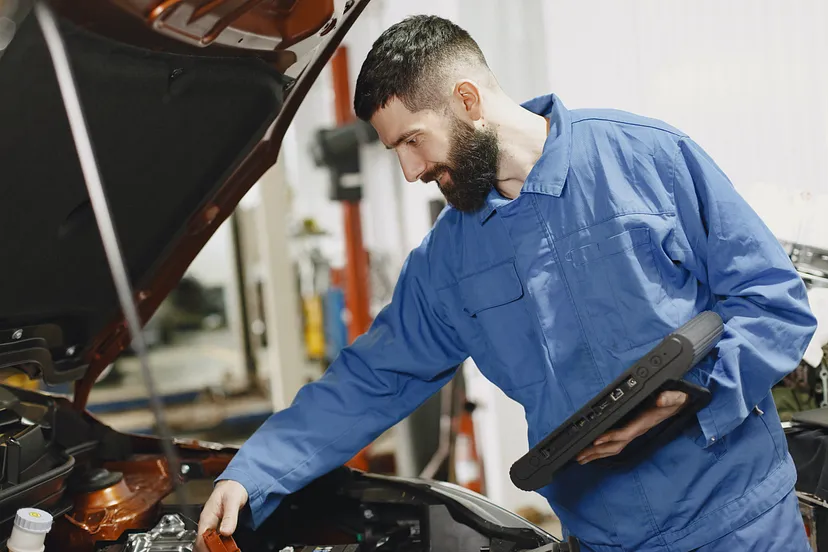
Regular car servicing is crucial for several reasons. Firstly, it ensures that your vehicle is running at its optimal performance, resulting in improved fuel efficiency and better handling. It also helps in identifying any potential issues or worn-out components that may lead to breakdowns or expensive repairs if left unattended. Additionally, a complete service history adds value to your car when you decide to sell it, as buyers are more confident in purchasing a well-maintained vehicle.
Different Types of Car Services
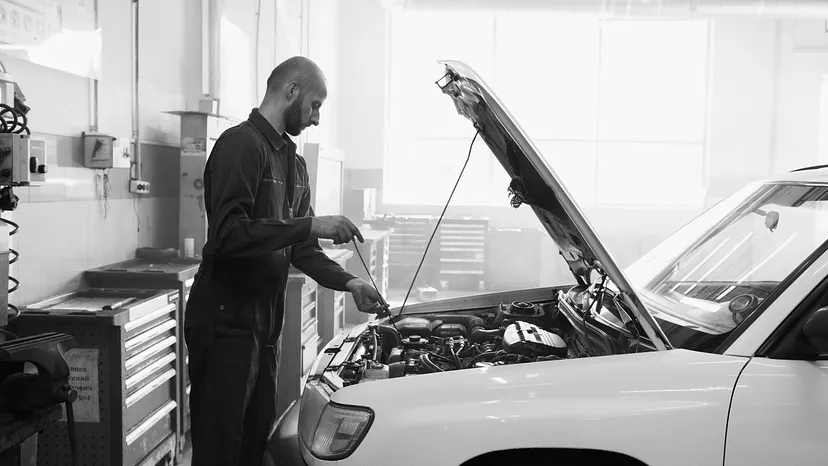
There are various types of car services available, each with its own level of thoroughness and recommended interval. Let’s explore the most common types:
Interim Service
An interim service is a less comprehensive version of a full service and is usually recommended every six months or 6,000 miles, whichever comes first. It includes a 50-point inspection, an engine oil change, and a new oil filter installation. While it is helpful in addressing any minor issues, it should not replace a full service.
Full Service

A full service is the most extensive type of service recommended for your vehicle. It is typically performed annually or every 12,000 miles and involves a 77-point inspection. A full service includes an engine oil and filter change, a comprehensive check of all fluids, a thorough brake inspection, and checks on over 50 other key components, including safety-related features. It may also include the replacement of spark plugs, air filters, wheel alignment, and suspension checks.
Manufacturer Service
If you own a higher-spec vehicle, an older car, or a luxury model, you may require a manufacturer service. The manufacturer’s handbook will provide specific instructions, and you will need to take your vehicle to an authorized garage or dealership. Manufacturer services often utilize official parts and fluids and are carried out by professionals trained by the manufacturer.
Major Service
A major service is a more comprehensive version of a full service and includes an extensive range of component replacements and fixes. It is recommended when a vehicle requires significant maintenance or has reached a specific mileage milestone.
What is Included in a Car Service ?

The exact components included in a car service may vary depending on the type of service and the service provider. However, here are some common elements you can expect to be covered:
Visual Inspection and Checks
During a car service, a mechanic will perform a visual inspection of various components and systems to ensure they are functioning properly. This includes checking for any leaks, signs of wear and tear, and loose or damaged parts. Some specific areas that may be inspected include:
Engine bay, Fluid levels (engine oil, coolant, brake fluid, power steering fluid, etc.), Belts and hoses -Battery and electrical connections, Brake system, Suspension and steering components, Exhaust system, Wheels and tires, Lights and signals, Windshield wipers and washers, Interior controls and features
Fluid Changes and Top-ups

Fluid maintenance is an essential part of a car service. This includes changing the engine oil and filter, topping up various fluids, and replacing filters as necessary. The fluids that may be addressed during a service include:
Engine oil, Coolant/antifreeze, Brake fluid, Power steering fluid, Transmission fluid (if applicable), Windshield washer fluid
Brake Inspection and Maintenance

The brake system is crucial for the safety of your vehicle. During a service, the mechanic will inspect the brake pads, discs, calipers, and brake lines for wear and tear. They may also clean and lubricate the relevant components, adjust the handbrake if necessary, and perform a brake fluid change if it hasn’t been done recently.
Air Filter and Cabin Filter Replacement

The air filter prevents debris and contaminants from entering the engine, while the cabin filter ensures clean air inside the vehicle’s cabin. These filters may be replaced during a service if they are dirty or clogged.
Spark Plug Replacement

Spark plugs play a vital role in the combustion process of your engine. Over time, they can wear out and affect engine performance. If necessary, a mechanic may replace the spark plugs during a service.
Additional Checks and Maintenance

A comprehensive car service may include additional checks and maintenance tasks, such as:
Wheel alignment and tire rotation, Suspension component checks, Fuel system inspection, Cooling system check, Timing belt replacement (if due), Emission system check, Battery and charging system test
How Often Should You Get Your Car Serviced ?
The frequency of car servicing depends on several factors, including the age of your vehicle, mileage, and the manufacturer’s recommendations. As a general guideline, most manufacturers recommend servicing your car at least once a year or every 12,000 miles, whichever comes first. However, some newer vehicles with extended service intervals may require servicing every two years or more.
It’s important to consult your car’s owner’s manual for the manufacturer’s recommended service intervals specific to your vehicle. Additionally, if you notice any unusual noises, performance issues, or warning lights, it’s advisable to have your car checked by a mechanic promptly, even if it’s before the recommended service interval.
Can You Get a Car Service at Home ?

Yes, you can now get a car service from the comfort of your own home or workplace. Mobile mechanics offer the convenience of having your car serviced on-site, eliminating the need to drop off and pick up your vehicle from a traditional garage. Choosing between a mobile mechanic and a local garage depends on your preference and the type of service required. Both options have their benefits, and it’s essential to ensure that the service provider is reputable and qualified.
If you prefer to carry out your own car service, it’s important to consider safety as the top priority. While some basic maintenance tasks can be performed by car owners, certain complex procedures should be left to professionals. It’s crucial to follow proper procedures, use the correct tools and equipment, and refer to reliable sources for guidance if you decide to undertake any DIY car servicing.
The Cost of a Car Service

The cost of a car service can vary depending on several factors, including the type of service, the service provider, and your location. As a rough estimate, you can expect to pay around £200 for a full service. However, prices may differ based on the complexity of the service and any additional repairs or parts replacements required.
It’s important to note that investing in regular car servicing can save you money in the long run by preventing major breakdowns and expensive repairs. Additionally, a well-maintained vehicle retains its value better, making it easier to sell or trade-in when the time comes.
Conclusion
Thanks for giving your valuable time to read this blog, In case you have a car and you are looking for a pre purchase inspection manchester then visit the Service My Car website for all the pre purchase inspection related solutions.
Car servicing is a crucial aspect of vehicle ownership that ensures your car runs smoothly, efficiently, and safely. Regular servicing helps identify potential issues, extends the lifespan of your vehicle, improves fuel efficiency, and adds value when selling. By understanding the different types of services, what is included in a service, and how often you should get your car serviced, you can make informed decisions regarding the maintenance of your vehicle. Whether you choose a mobile mechanic or a traditional garage, prioritizing regular car servicing is essential for the longevity and performance of your car.
Pages: